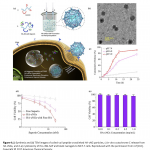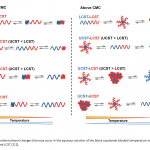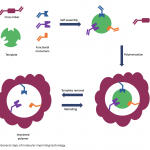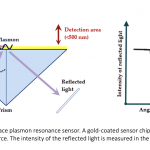Special Issue for 100 Years of Polymer Science
From the Editor
Dear readers of the Hacettepe Journal of Biology and Chemistry,
The year 2020 marks the 100th anniversary of a milestone paper published in 1920 by Hermann Staudinger. He introduced the groundbreaking hypothesis of the existence of long chain molecules, formed by a large number of covalently linked monomeric units. This and related papers can be considered as a beginning of the field of macromolecular chemistry and polymer science.
To celebrate the 100th Anniversary of the Polymer Science, Hacettepe Journal of Biology and Chemistry has invited Prof. Dr. Olgun Güven, who is the leading Turkish scientist in polymer science and engineering as a guest editor to prepare this special issue to combine the insights of the researchers working on this area in the form of reviews, trends, or perspectives on the current, past and future developments in macromolecular chemistry. I would like to thank all contributors for making this issue possible. These contributions have been made available in 'open access' format and we invite you to explore these perspectives on what the future of the field might hold.
Prof. Dr. Adil Denizli
Editor
100 Years of Polymer Science
On June 12, 1920 Hermann Staudinger, an organic chemist working at the Swiss Federal Institute of Technology in Zurich published a paper titled “Über Polymerisation” that have revolutionized chemistry1. Before 1920 the chemistry community believed that very high molecular weights of certain compounds was the result of formation of molecular aggregates termed as colloids. Staudinger strongly disagreed on this colloidal explanation and said that appearently high molecular weight compounds such as rubber, cellulose, etc. were in fact composed of a series of smaller molecules bonded to each other with covalent bonds, proposing that these are macromolecules. But this was in total contradiction with the scientific opinion of those times. Even the Nobel Laureates Emil Fischer (1902) and Heinrich Otto Wieland (1927) were in complete disagreement of Staudinger’s theory of high molecular weights. Skepticism of Wieland was evident in his advise to Staudinger2: “Dear Colleague, abandon your idea of large molecules, organic molecules with molecular weights exceeding 5000 do not exist. Purify your products such as rubber, they will crystallize and turn out to be low molecular weight compounds.” Staudinger did not step back and after his paper “On Polymerization” in another paper on hydrogenation of natural rubber published in 1922 he used the term “macromolecule”. Despite heavy opposition and even sarcasm of his colleagues Staudinger completely quit his traditional field of research and to focus exclusively on polymer research he moved to the University of Freiburg in 1926 where he remained for the rest of his career, until his retirement in 1951. Staudinger wrote in his memoirs: “Those colleagues who were aware of my early publications in the field of low molecular weight chemistry asked me why I decided to quit these beautiful fields of research and why I devoted myself to such disgusting and ill-defined compounds such as rubber and synthetic polymers which are in view of their properties were referred to as grease chemistry.”
Over the years however, Staudinger provided ample experimental evidence by investigating the reactivity of rubber and cellulose and using viscosimetry to measure molecular weights. The concept was slowly acccepted in the late 1920s and early 1930s. It was only in 1935 that Faraday Society accepted the macromolecular concept. He founded the first polymer chemistry journal “Die Makromolekulare Chemie” (today’s Macromolecular Chemistry and Physics) in 1940. Staudinger’s research was published in more than 800 publications. He summarized his research in his autobiography “Arbeitserinnerungen” published in 1970. His collected Works entitled “Das wissenschaftliche werk von Hermann Staudinger” were edited by his wife Magda Staudinger and published between 1969 and 1976. His decades long effort in developing and promoting his concept of polymers was honored in 1953 when he received the Nobel Prize in Chemistry “for his discoveries in the field of polymer chemistry”. The father of polymer chemistry died on September 8, 1965.
On the occasion of the anniversary of 100 years of polymer science various events and activities have been planned and organized in the World in 2020 via National, International Meeetings or Conferences which were unfortunately shadowed by the COVID-19 pandemic restrictions. Special issues of leading polymer science journals have been dedicated to celebrate this important event to look back at the past, view the present and look ahead to the future. It is an honor for us to publish this special issue of Hacettepe Journal of Chemistry and Biology through the initiative of Prof. Adil Denizli, editor-in-chief of the journal to commemorate Staudinger’s landmark paper. As the guest editor of this issue I am very grateful to internationally renowned Turkish polymer scientists who acccepted our invitation to present their current research in polymer science contributing to this special issue. The list of contributors to this issue is by no means exhaustive, size limitation of the volume bounded are hands to invite more scientists.
We hope that this special issue will be a stimulus for the Turkish scientific community for furthering this exciting subject in the second century of polymer science.
I would like to conclude by referring to the following statement made by Lord Alexander Todd, Nobel Laureate 1957: “I am inclined to think that the development of polymerization is, perhaps, the biggest thing that chemistry has done, where it has the biggest effect on everyday life”.
Prof. Dr. Olgun Güven
Ayvalık, 22 September 2020
- H. Staudinger, “Über Polymerisation” Ber. Dtsch. Ges., 53, 1920, 1073-85.
- R. Mülhaupt, “Herman Staudinger and the Origin of Polymer Chemistry”, Angew. Chemie Int. Ed., 43, 2004, 1054-63.

































